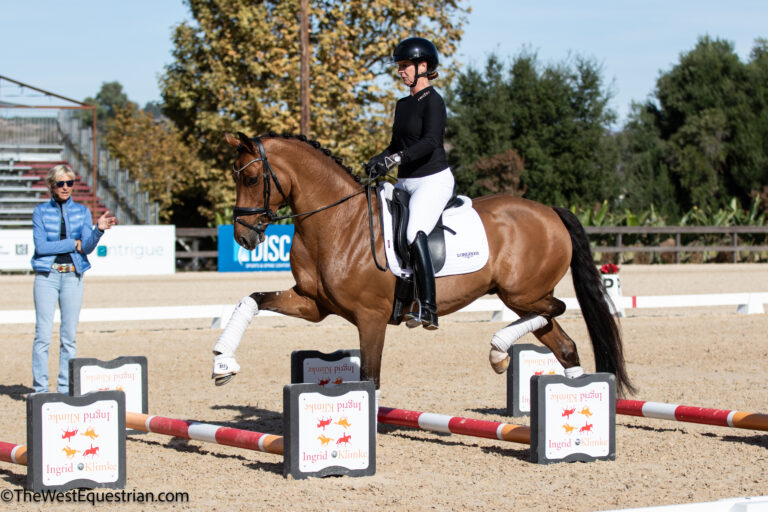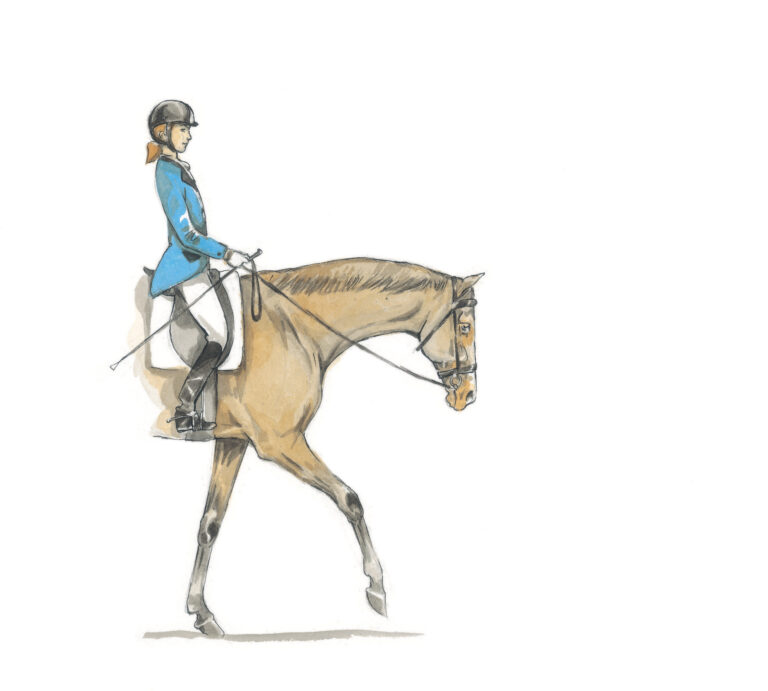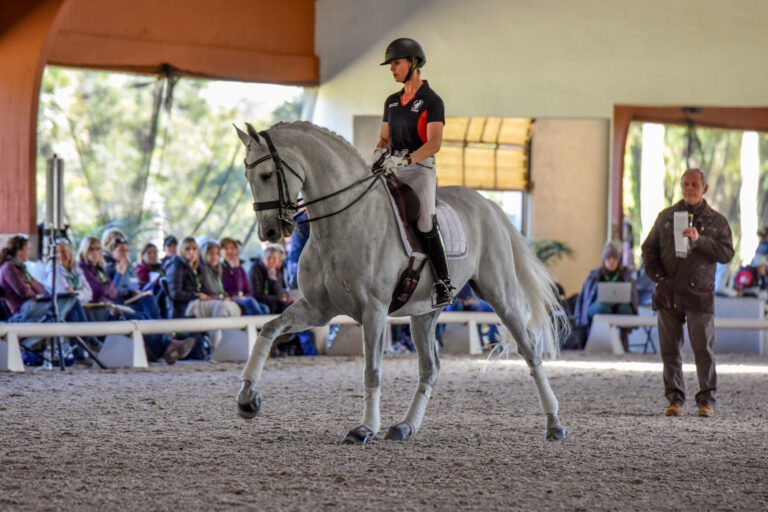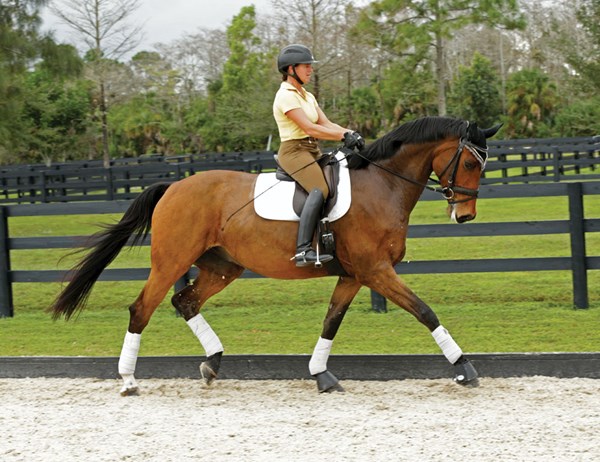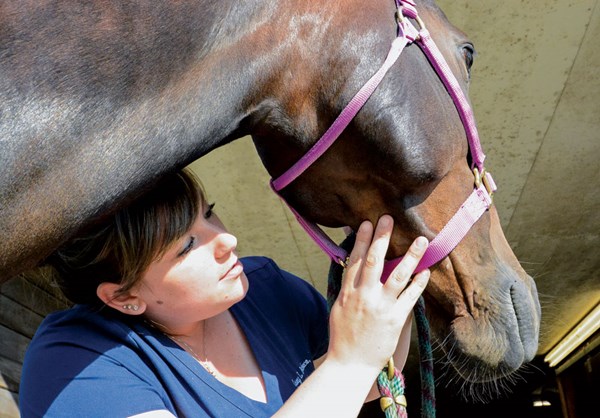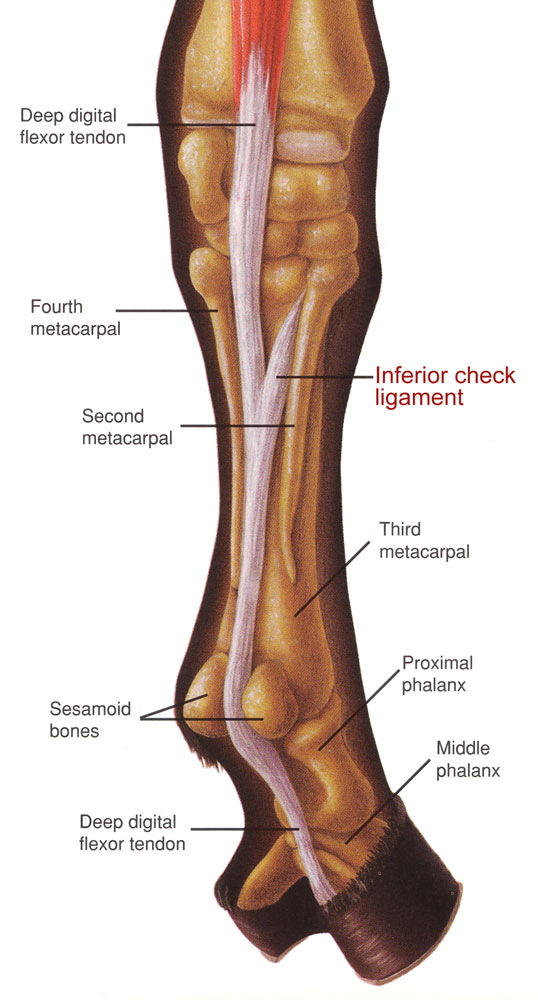The Short Answer
Riders are required to sit the trot beginning in the USEF/USDF Second Level dressage tests.
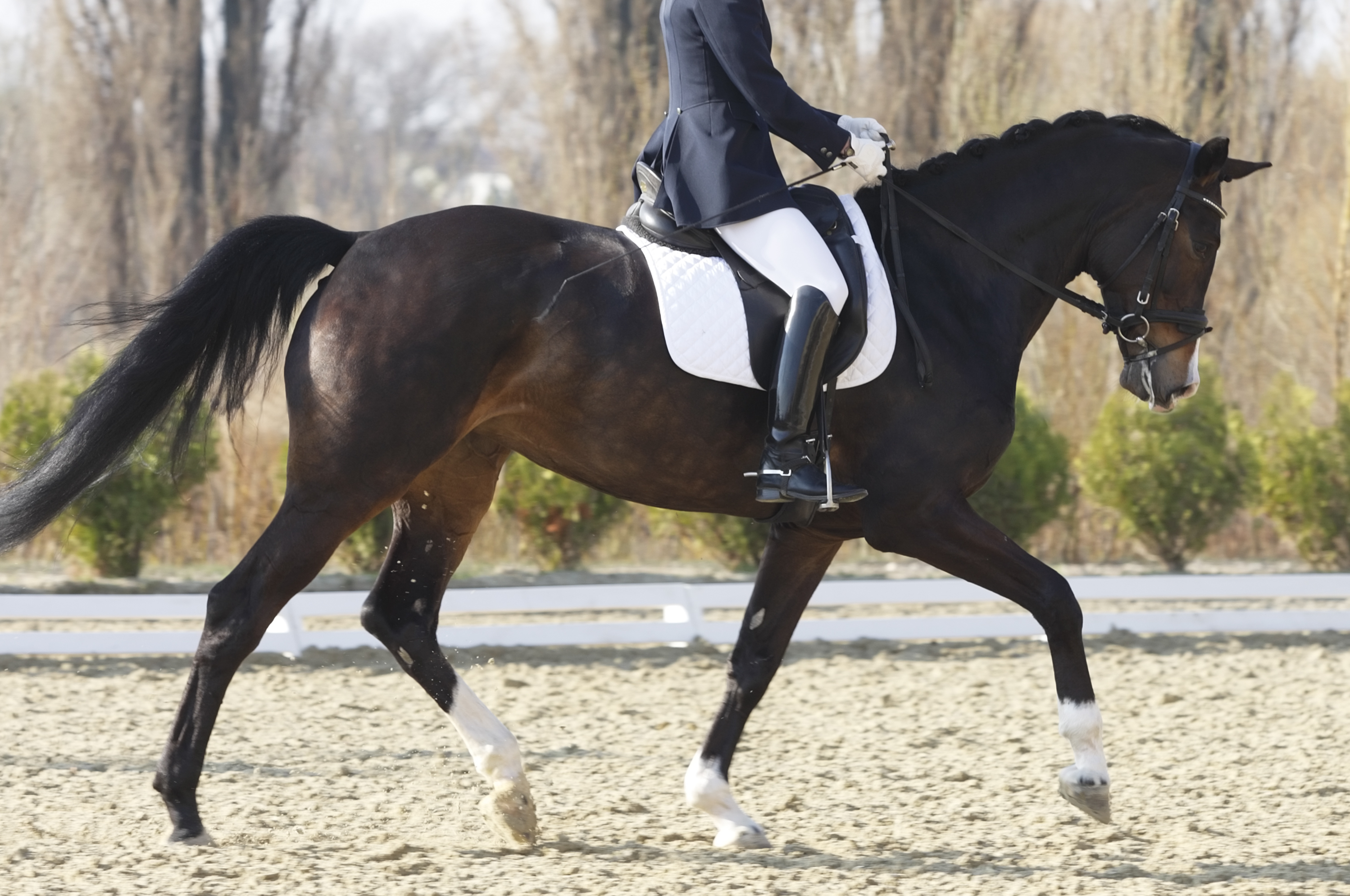
The Longer Answer
According to the Rulebook, all trot work is executed “sitting,” unless otherwise indicated in the test.
Training Level and First Level tests state that “All trot work may be ridden sitting or rising, unless stated.”
Note that in certain tests below Second Level, some specific movements do require rising trot, such as the stretchy trot that appears at the end of First Level, Test 2. Introductory Level tests state: “All trot work to be ridden rising. Transitions from trot to canter and canter to trot may be performed through sitting trot with the objective of performing a smooth transition.”
In the Rulebook it states: “If a rider performs in a rising trot when a sitting trot is required,
or vice versa, the bell must be sounded and the rider warned that this is an error that accumulates if repeated,
leading to elimination at the third occurrence.”
To read the 2019-2022 USEF/USDF dressage tests, click here.


